pharmachologic effect
Miramistin® has a broad spectrum of antimicrobial activity, including hospital strains resistant to antibiotics. The drug has a pronounced bactericidal effect against gram-positive (Staphylococcus spp., Streptococcus spp., Streptococcus pneumoniae, etc.), gram-negative (Pseudomonas aeruginosa, Escherichia coli, Klebsiella spp., Etc.), aerobic and anaerobic bacteria, determined microbial associations, including hospital strains with multidrug resistance to antibiotics. It has an antifungal effect on ascomycetes of the genus Aspergillus and genus Penicillium, yeast (Rhodotorula rubra, Torulopsis gabrata, etc.) and yeast-like fungi (Candida albicans, Candida tropicalis, Candida krusei, Pityrosporum orbiculare, Malassezia, etc.) (Trichophyton rubrum, Trichophyton mentagrophytes, Trichophyton verrucosum, Trichophyton schoenleini, Trichophyton violacent, Epidermophyton Kaufman-Wolf, Epidermophyton floccosum, Microsporum gypseum, Microsporum canis, etc.), as well as other microorganisms in the form of pathogenic including fungal microflora with resistance to chemotherapy drugs. It has an antiviral effect, is active against complex viruses (herpes viruses, human immunodeficiency virus and others). Miramistin® acts on sexually transmitted diseases (Chlamydia spp., Treponema spp., Trichomonas vaginalis, Neisseria gonorrhoeae and others). Effectively prevents infection of wounds and burns. It activates the regeneration processes. Stimulates protective reactions at the site of application, by activating the absorption and digestion functions of phagocytes, potentiates the activity of the monocytic-macrophage system. It has a pronounced hyperosmolar activity, as a result of which it relieves wound and perifocal inflammation, absorbs purulent exudate, contributing to the formation of a dry scab. Does not damage granulation and viable skin cells, does not inhibit marginal epithelization. Does not possess local irritating effect and allergenic properties.
Indications
For use in surgery, traumatology: – prevention of suppuration and treatment of purulent wounds; – treatment of purulent-inflammatory processes of the musculoskeletal system. For use in obstetrics, gynecology: – prevention and treatment of suppuration of postpartum injuries, perineal and vaginal wounds, postpartum infections; – prevention and treatment of inflammatory diseases (vulvovaginitis, endometritis). For use in combustiology: – treatment of superficial and deep burns of II and III A degree; – preparation of burn wounds for dermatoplasty. For use in dermatology, venereology: – treatment and prevention of pyoderma and dermatomycosis, candidiasis of the skin and mucous membranes, mycoses of the feet; – individual prevention of sexually transmitted diseases (including syphilis, gonorrhea, chlamydia, trichomoniasis, genital herpes, genital candidiasis). For use in urology: – complex treatment of acute and chronic urethritis and urethroprostatitis of a specific (chlamydia, trichomoniasis, gonorrhea) and non-specific nature. For use in dentistry: – treatment and prevention of infectious and inflammatory diseases of the oral cavity: stomatitis, gingivitis, periodontitis, periodontitis; – hygienic processing of removable dentures. For use in otorhinolaryngology: – complex treatment of acute and chronic otitis media, sinusitis, tonsillitis, laryngitis; – complex treatment of acute pharyngitis and / or exacerbation of chronic tonsillitis in children aged 3 to 14 years.
Method of administration and dosage
Adults When used in surgery, traumatology, combustiology for prophylactic and therapeutic purposes, they irrigate the surface of wounds and burns, loosely tampon wounds and fistulous passages, fix gauze tampons moistened with the drug. The treatment procedure is repeated 2-3 times / day for 3-5 days. A highly effective method of active drainage of wounds and cavities with a daily consumption of up to 1 liter of the drug. When used in obstetrics, gynecology in order to prevent postpartum infection, it is used in the form of vaginal irrigation before childbirth (5-7 days), in childbirth after each vaginal examination and in the postpartum period, 50 ml of the drug in the form of a tampon with an exposure of 2 hours, for 5 days. When women are delivered by cesarean section, immediately before the operation, the vagina is treated, during the operation – the uterine cavity and an incision on it, and in the postoperative period, tampons moistened with the drug are inserted into the vagina with an exposure of 2 hours for 7 days. Treatment of inflammatory diseases is carried out in a course of 2 weeks by intravaginal administration of tampons with the drug, as well as by the method of drug electrophoresis. For the prevention of sexually transmitted diseases, the drug is effective if it is used no later than 2 hours after intercourse.
Side effects
Local reactions: in some cases – a slight burning sensation, which disappears on its own in 15-20 seconds and does not require discontinuation of the drug. Possibly: allergic reactions.
Contraindications
– hypersensitivity to drug components.
Overdose
There are no data on an overdose of Miramistin®.
Interaction with other drugs
With simultaneous use with antibiotics, an increase in their antibacterial and antifungal properties was noted.
Storage conditions
The drug should be stored out of the reach of children at a temperature not exceeding 25 ° C. The shelf life is 3 years.



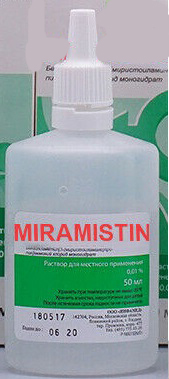
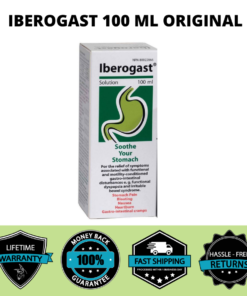
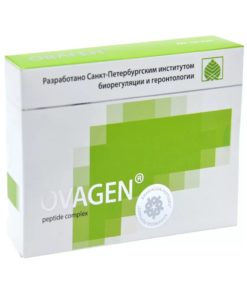
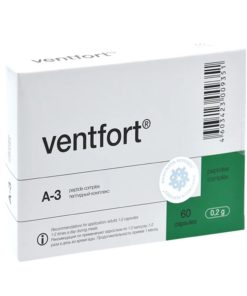

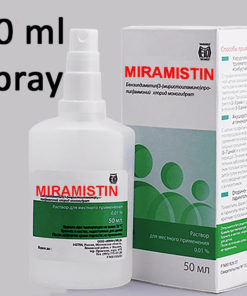
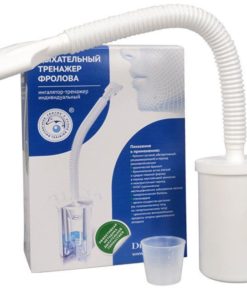
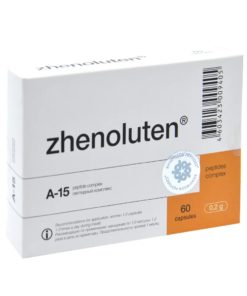

Reviews
There are no reviews yet.